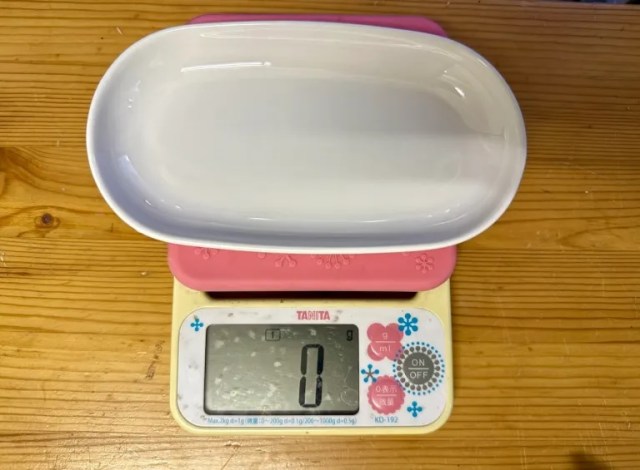
We strip four pork cutlets down to their fighting weights and see who’s got the most meat inside.
Japan loves tonkatsu (pork cutlet). It can be eaten as-is, often accompanied by sides of rice and cabbage, or it can be used as a building block to make katsudon (a pork cutlet rice bowl with egg and/or sauce), put between slices of bread as a katsu sandwich, or covered with roux to make katsu curry.
Being so popular and versatile, tonkatsu is a mainstay in the prepared food sections of Japanese supermarkets. However, whenever we find ourselves staring longingly at super market tonkatsu (something that happens on a near-daily basis), we can’t help but wonder how much actual meat they have. We don’t think our tender hearts could handle the shock and disappointment of biting into tonkatsu only to come away with it feeling more like a mouthful of bread crumbs than a slab of delicious pork.
So we decided to become pioneers in the field of tonkatsu research by procuring pork cutlets from four major Japanese supermarket chains, removing all of their breading, and seeing which gives you the most actual meat for your yen.
Pictured clockwise from top-left in the photo below are tonkatsu from the supermarket chains Livin (part of the Seiyu group), York Foods (part of the 7-Eleven group), Aeon, and Life.
Let’s start this weigh-off with Life, who charges 429 yen for their pork cutlet.
Having never removed the breading from a cutlet before, we were surprised by how much time and effort it took. In the case of life’s tonkatsu, the breading had firmly attached itself to the meat, without a loose pocket of air between the two, which imparted a feeling of quality.
Once we had finally kneaded all of the breading off, we put Life’s tonkatsu on the scale…
…which showed a weight of 110 grams (3.9 ounces).
Next up was Livin, whose 459-yen tonkatsu comes conveniently pre-sliced into six pieces, which is especially handy if you’re thinking of using it for katsu curry.
Up on the scale it goes, and…
…it comes in even heavier than Life’s with 115 grams of pork.
At this point, we were thinking that all of our cutlets might end up in the 110/115 -gram ballpark, but when we weighed York Food’s 430-gram tonkatsu, which also comes pre-sliced…
…we discovered we had only 98 grams of pork! And the downsizing continued with Aeon’s 462-yen cutlet…
…which had a scant 79 grams of pork.
So as for meat mass, Livin is the winner here.
● Livin: 115 grams of meat
● Life: 110 grams of meat
● York Foods: 98 grams of meat
● Aeon: 79 grams of meat
What’s more important, though, is the cost performance of each, and calculated in terms of price per 100 grams of pork, Life is the value leader here, while Aeon is the most expensive, by a pretty wide margin.
● Life: 390 yen per 100 grams of meat
● Livin: 430 yen per 100 grams of meat
● York Foods: 438 yen per 100 grams of meat
● Aeon: 584 yen per 100 grams of meat
As for which one tastes the best? With taste-testing duties falling to our Japanese-language reporter Masanuki Sunakoma, he declares Livin’s tonkatsu the winner. Seasoned with mojio, salt made from seaweed, each bite of Livin’s tonkatsu is like a burst of concentrated umami, Masanuki says. Even at room temperature it retains a great texture with just the right amount of crispness to its breading, and so even if, at 495 yen, it’s the most expensive tonkatsu overall in this bunch, he thinks it’s worth it, especially since it’s also the second-best value in price per gram.
Photos ©SoraNews24
● Want to hear about SoraNews24’s latest articles as soon as they’re published? Follow us on Facebook and Twitter!
[ Read in Japanese ]

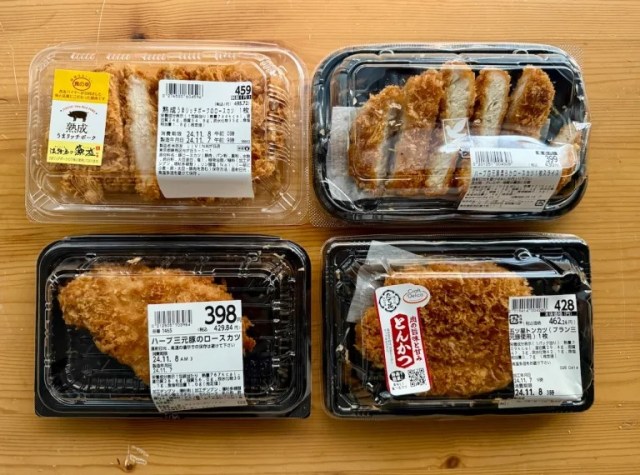
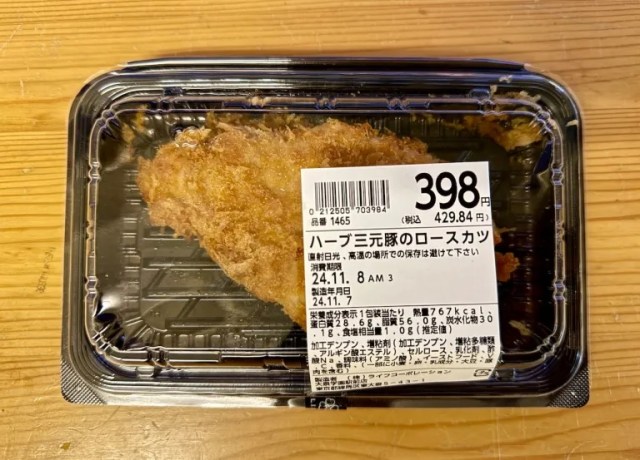
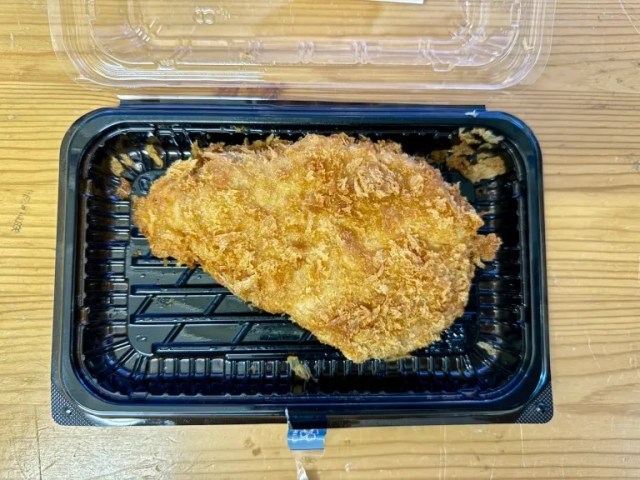
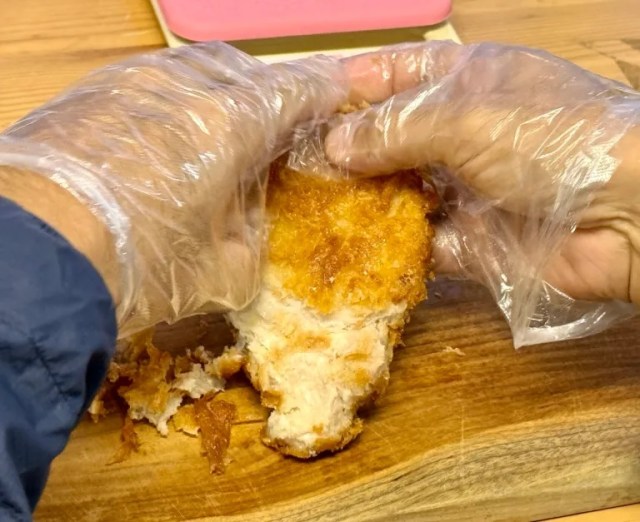
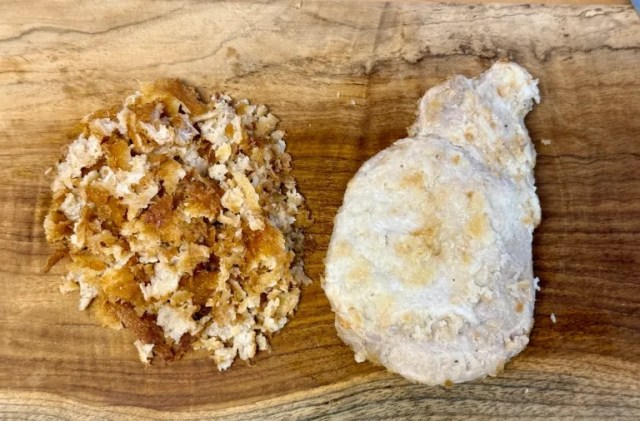
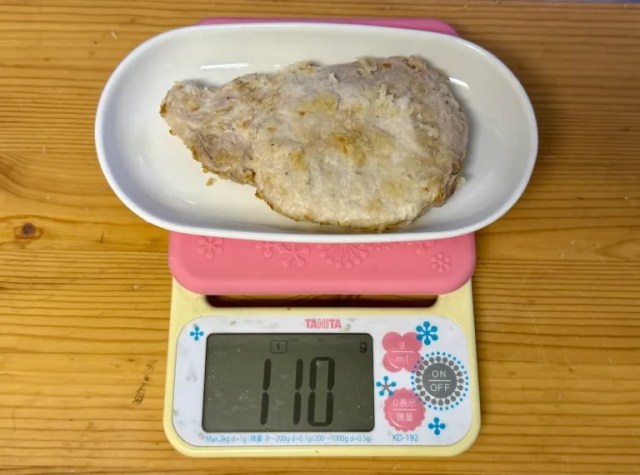
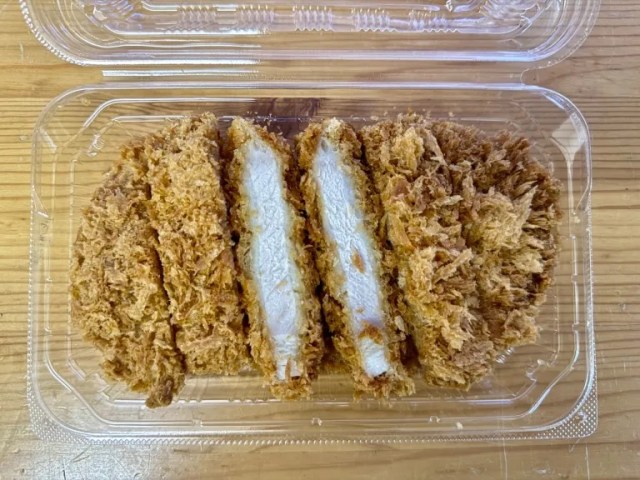
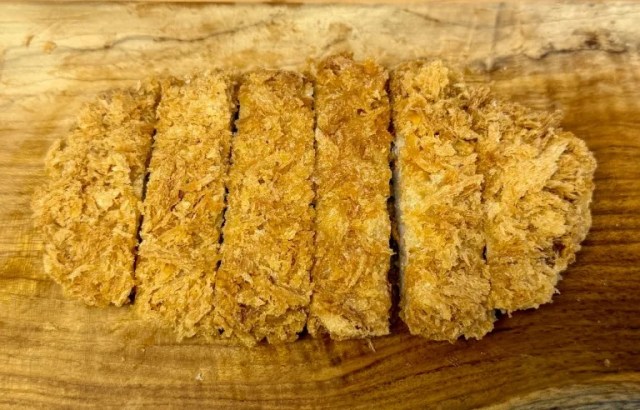
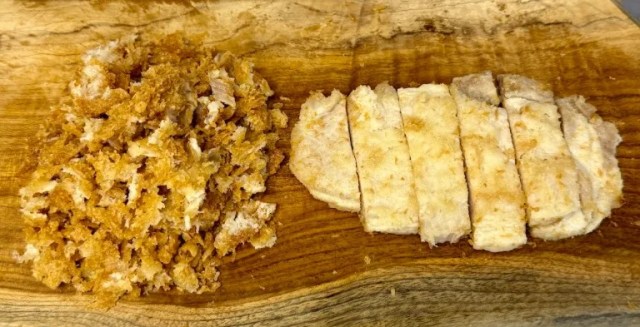
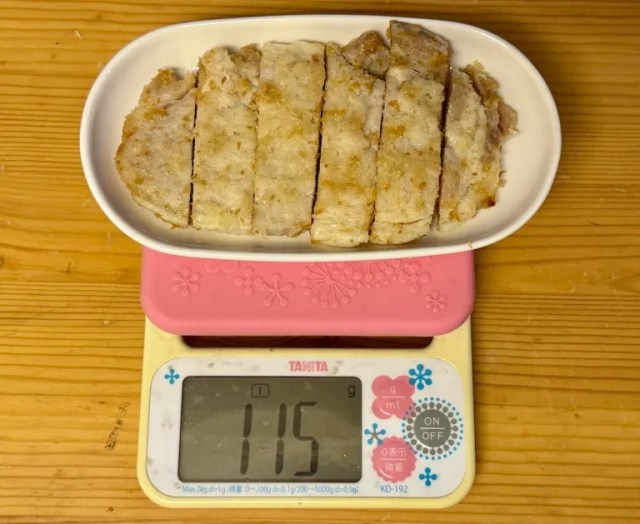
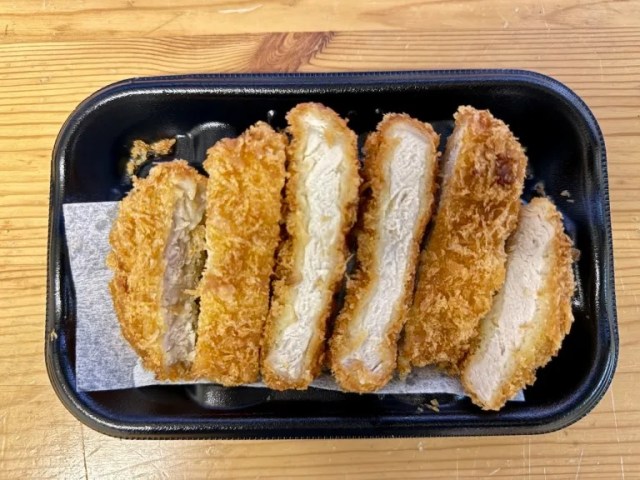
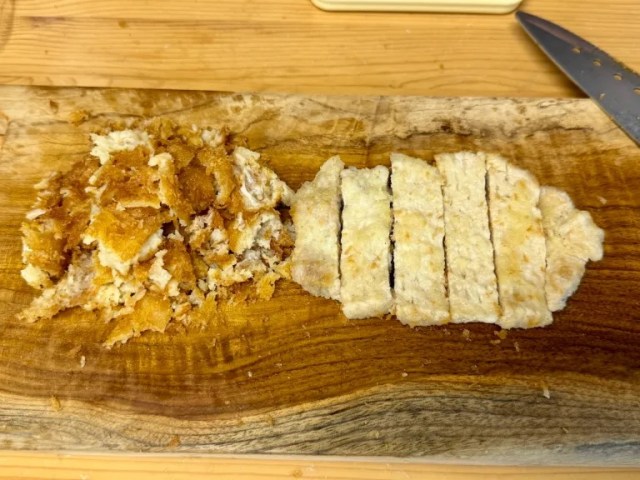
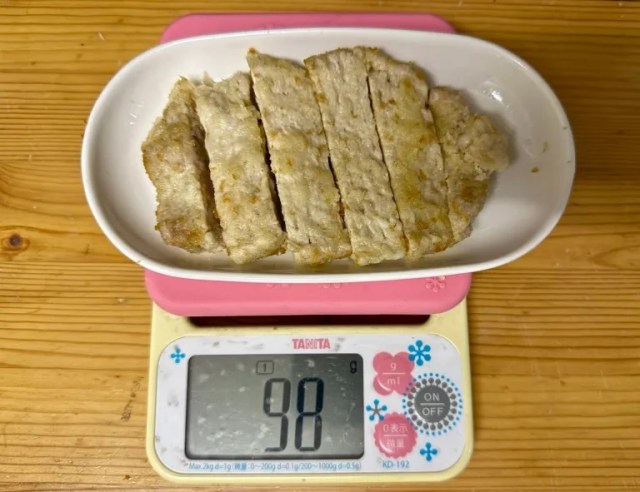
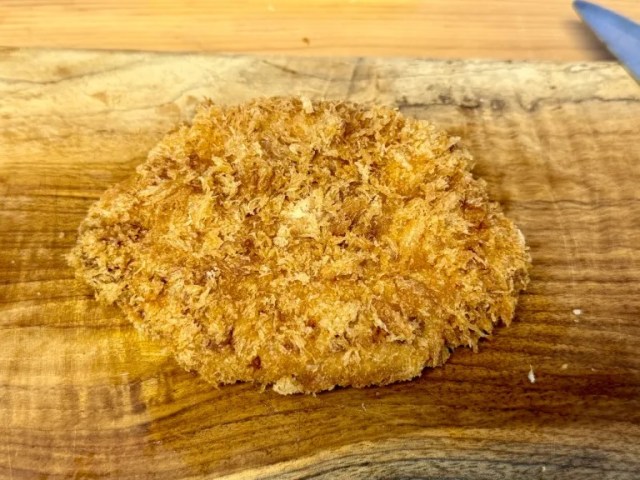
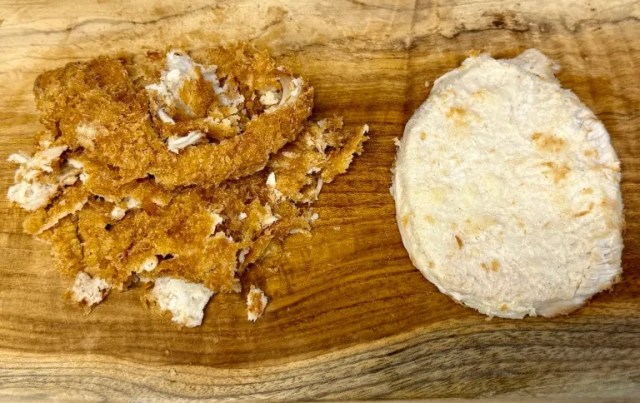
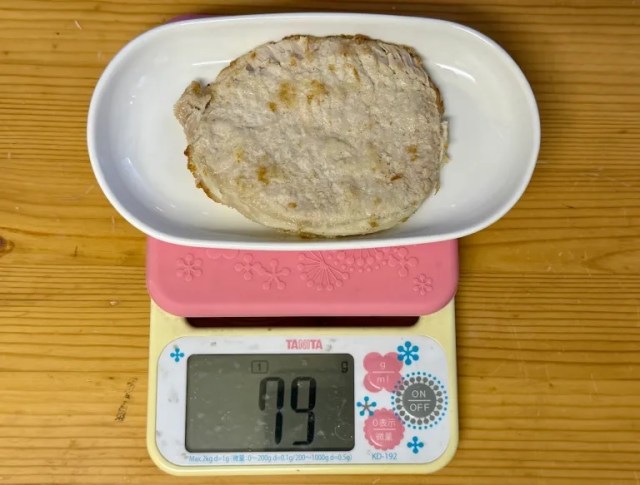
 Katsudon vs. tonkatsu vs. katsu sandwich – What’s the best way to eat pork cutlet in Japan?
Katsudon vs. tonkatsu vs. katsu sandwich – What’s the best way to eat pork cutlet in Japan? Restaurant Yoshibei is crazy in the best way: A pork cutlet set with a side of pork cutlet bowl
Restaurant Yoshibei is crazy in the best way: A pork cutlet set with a side of pork cutlet bowl Instant katsu? Taste-testing the tempting promise of freeze-dried tonkatsu topping【Taste test】
Instant katsu? Taste-testing the tempting promise of freeze-dried tonkatsu topping【Taste test】 Guilt-free snacking with 129-calorie bags of faux fried pork Innocent Tonkatsu
Guilt-free snacking with 129-calorie bags of faux fried pork Innocent Tonkatsu The most delicious way to eat tonkatsu blows people’s minds in Japan
The most delicious way to eat tonkatsu blows people’s minds in Japan Tokyo cafe offers all-you-can-eat pancakes for less than ten bucks!
Tokyo cafe offers all-you-can-eat pancakes for less than ten bucks! Photos from 140 years ago show Tokyo’s skyline was amazing long before the Skytree was ever built
Photos from 140 years ago show Tokyo’s skyline was amazing long before the Skytree was ever built That time Seiji called JASRAC to ask why he didn’t get paid royalties for his song being on TV
That time Seiji called JASRAC to ask why he didn’t get paid royalties for his song being on TV How to do an overnight bus trip to Hirosaki from Tokyo – Part 1【Photos】
How to do an overnight bus trip to Hirosaki from Tokyo – Part 1【Photos】 New sushi restaurant hidden inside Tokyo Station is a secret gem
New sushi restaurant hidden inside Tokyo Station is a secret gem Daiso has giant new branch in middle of Tokyo’s Shinjuku neighborhood (and another beneath it)
Daiso has giant new branch in middle of Tokyo’s Shinjuku neighborhood (and another beneath it) Dragon Quest Burgers and Slime drinks are coming to McDonald’s Japan【Video】
Dragon Quest Burgers and Slime drinks are coming to McDonald’s Japan【Video】 Policewoman forgets gun in restroom, continuing an odd trend in Japan
Policewoman forgets gun in restroom, continuing an odd trend in Japan Step into Japanese culture with Converse’s new Japan-exclusive shoes featuring gods, sushi style
Step into Japanese culture with Converse’s new Japan-exclusive shoes featuring gods, sushi style We fry up a feast at Kushiya Monogatari and learn the joy of Japanese skewer restaurants
We fry up a feast at Kushiya Monogatari and learn the joy of Japanese skewer restaurants Starbucks Japan ready to get Year of the Horse started with adorable drinkware and plushies【Pics】
Starbucks Japan ready to get Year of the Horse started with adorable drinkware and plushies【Pics】 7 great places to see Mt. Fuji from without having to climb it
7 great places to see Mt. Fuji from without having to climb it Cyberpunk anime meets traditional culture in Ghost in the Shell gold leaf Japanese changing screens
Cyberpunk anime meets traditional culture in Ghost in the Shell gold leaf Japanese changing screens Hayao Miyazaki says Happy New Year to Studio Ghibli fans with new art for Year of the Horse
Hayao Miyazaki says Happy New Year to Studio Ghibli fans with new art for Year of the Horse Hello Kitty Choco Egg figures are an adorable trip through three periods of Japanese pop culture【Pics】
Hello Kitty Choco Egg figures are an adorable trip through three periods of Japanese pop culture【Pics】 We found possibly the quietest Japanese-style hotel in Tokyo’s bustling Shinjuku district
We found possibly the quietest Japanese-style hotel in Tokyo’s bustling Shinjuku district 7-Eleven Japan’s ramen-cooking robot whipped us up a bowl of noodles【Taste test】
7-Eleven Japan’s ramen-cooking robot whipped us up a bowl of noodles【Taste test】 Sumo Sanrio! Hello Kitty and pals team up with Japan Sumo Association for new merch【Pics】
Sumo Sanrio! Hello Kitty and pals team up with Japan Sumo Association for new merch【Pics】 Japan’s oldest largetooth sawfish in captivity back on display in Mie Prefecture
Japan’s oldest largetooth sawfish in captivity back on display in Mie Prefecture More Than a Capsule Stay: Why Solo Travelers Choose “global cabin Yokohama Chinatown”
More Than a Capsule Stay: Why Solo Travelers Choose “global cabin Yokohama Chinatown” 7-Eleven Japan starts new temporary luggage storage service in over 300 branches
7-Eleven Japan starts new temporary luggage storage service in over 300 branches Disillusionment at Tsukiji’s tourist-target prices led us to a great ramen restaurant in Tokyo
Disillusionment at Tsukiji’s tourist-target prices led us to a great ramen restaurant in Tokyo Starbucks teams up with 166-year-old Kyoto doll maker for Year of the Horse decorations【Photos】
Starbucks teams up with 166-year-old Kyoto doll maker for Year of the Horse decorations【Photos】 Tokyo considering law requiring more trash cans following litter increase in heavily touristed area
Tokyo considering law requiring more trash cans following litter increase in heavily touristed area Tokyo’s Tsukiji sushi neighborhood asks tour groups to stay away for the rest of the month
Tokyo’s Tsukiji sushi neighborhood asks tour groups to stay away for the rest of the month Tokyo event lets you travel back in time, for free, to celebrate 100 years since Showa era start
Tokyo event lets you travel back in time, for free, to celebrate 100 years since Showa era start Sanrio theme park in Japan announces plans to expand into a Sanrio resort
Sanrio theme park in Japan announces plans to expand into a Sanrio resort Japan may add Japanese language proficiency, lifestyle classes to permanent foreign resident requirements
Japan may add Japanese language proficiency, lifestyle classes to permanent foreign resident requirements Stamina-destroying “Paralysis Noodles” are Tokyo’s newest over-the-top ramen innovation
Stamina-destroying “Paralysis Noodles” are Tokyo’s newest over-the-top ramen innovation Survey asks foreign tourists what bothered them in Japan, more than half gave same answer
Survey asks foreign tourists what bothered them in Japan, more than half gave same answer Japan’s human washing machines will go on sale to general public, demos to be held in Tokyo
Japan’s human washing machines will go on sale to general public, demos to be held in Tokyo Japan’s deadliest food claims more victims, but why do people keep eating it for New Year’s?
Japan’s deadliest food claims more victims, but why do people keep eating it for New Year’s? We deeply regret going into this tunnel on our walk in the mountains of Japan
We deeply regret going into this tunnel on our walk in the mountains of Japan Studio Ghibli releases Kodama forest spirits from Princess Mononoke to light up your home
Studio Ghibli releases Kodama forest spirits from Princess Mononoke to light up your home Major Japanese hotel chain says reservations via overseas booking sites may not be valid
Major Japanese hotel chain says reservations via overseas booking sites may not be valid Put sesame oil in your coffee? Japanese maker says it’s the best way to start your day【Taste test】
Put sesame oil in your coffee? Japanese maker says it’s the best way to start your day【Taste test】 No more using real katana for tourism activities, Japan’s National Police Agency says
No more using real katana for tourism activities, Japan’s National Police Agency says Starbucks Japan reveals new sakura drinkware collection, inspired by evening cherry blossoms
Starbucks Japan reveals new sakura drinkware collection, inspired by evening cherry blossoms Updated cherry blossom forecast shows extra-long sakura season for Japan this year
Updated cherry blossom forecast shows extra-long sakura season for Japan this year Foreign tourists go crazy for white tonkatsu in Japan
Foreign tourists go crazy for white tonkatsu in Japan Tokyo all-you-can-eat tonkatsu pork cutlet restaurant is all we need for a happy meal
Tokyo all-you-can-eat tonkatsu pork cutlet restaurant is all we need for a happy meal A whole new way to eat katsu: Cold katsu soba【Taste test】
A whole new way to eat katsu: Cold katsu soba【Taste test】 Tomahawk Tonkatsu at Japanese restaurant becomes a hot topic online
Tomahawk Tonkatsu at Japanese restaurant becomes a hot topic online This is Akihabara’s best hidden food vending machine: The Mansei meat sandwich machine!
This is Akihabara’s best hidden food vending machine: The Mansei meat sandwich machine! Are you Team Karaage or Team Tonkatsu? We grapple with this weighty debate
Are you Team Karaage or Team Tonkatsu? We grapple with this weighty debate Beyond katsu curry: Tare katsu curry now being served at Coco Ichibanya
Beyond katsu curry: Tare katsu curry now being served at Coco Ichibanya Katsu Curry Ramen: An unusual Japanese dish that combines three great meals in one
Katsu Curry Ramen: An unusual Japanese dish that combines three great meals in one We tackle a titanic bowl of pork cutlet katsudon and (just about) live to tell the tale
We tackle a titanic bowl of pork cutlet katsudon and (just about) live to tell the tale Katsu curry rice you can eat with your hands? Mos Burger unveils new Rice Burger Katsu Curry
Katsu curry rice you can eat with your hands? Mos Burger unveils new Rice Burger Katsu Curry Our delivery of meat from Katsuya was so full of everything deep-fried that we almost cried
Our delivery of meat from Katsuya was so full of everything deep-fried that we almost cried Budget sukiyaki showdown! Yoshinoya, Sukiya, or Yayoiken, who gives the most beef for your yen?
Budget sukiyaki showdown! Yoshinoya, Sukiya, or Yayoiken, who gives the most beef for your yen? How to make an imitation katsudon pork cutlet bowl using imitation katsu【SoraKitchen】
How to make an imitation katsudon pork cutlet bowl using imitation katsu【SoraKitchen】 Japan’s favorite pork cutlet sandwich maker also has awesome katsudon restaurant in Tokyo Station
Japan’s favorite pork cutlet sandwich maker also has awesome katsudon restaurant in Tokyo Station Is katsudon a dish best served cold? Trying out the new Hiyashi Dashi Katsudon in Tokyo【Taste test】
Is katsudon a dish best served cold? Trying out the new Hiyashi Dashi Katsudon in Tokyo【Taste test】 Japanese convenience store sells an epic egg sandwich you won’t find anywhere else
Japanese convenience store sells an epic egg sandwich you won’t find anywhere else
Leave a Reply